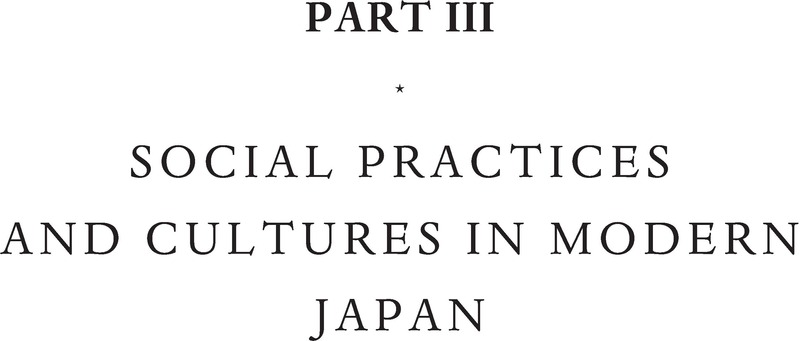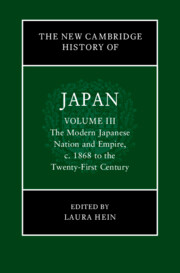Book contents
- The New Cambridge History of Japan
- The New Cambridge History of Japan
- The New Cambridge History of Japan
- Copyright page
- Contents
- Figures
- Maps
- Tables
- Contributors to Volume III
- Preface
- Maps
- Introduction
- Part I Political Sovereignty
- Part II Environment, Economy, and Technology
- Part III Social Practices and Cultures in Modern Japan
- Index
- References
Part III - Social Practices and Cultures in Modern Japan
Published online by Cambridge University Press: 19 May 2023
- The New Cambridge History of Japan
- The New Cambridge History of Japan
- The New Cambridge History of Japan
- Copyright page
- Contents
- Figures
- Maps
- Tables
- Contributors to Volume III
- Preface
- Maps
- Introduction
- Part I Political Sovereignty
- Part II Environment, Economy, and Technology
- Part III Social Practices and Cultures in Modern Japan
- Index
- References
Summary

- Type
- Chapter
- Information
- The New Cambridge History of Japan , pp. 461 - 793Publisher: Cambridge University PressPrint publication year: 2023



